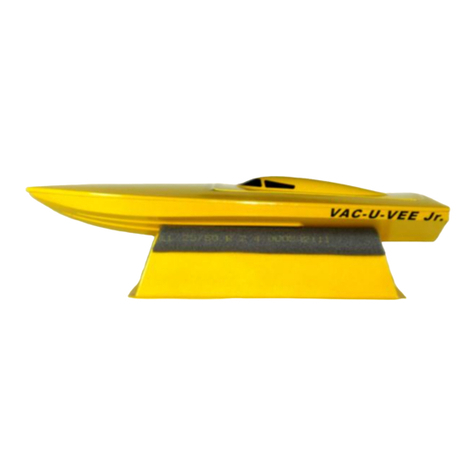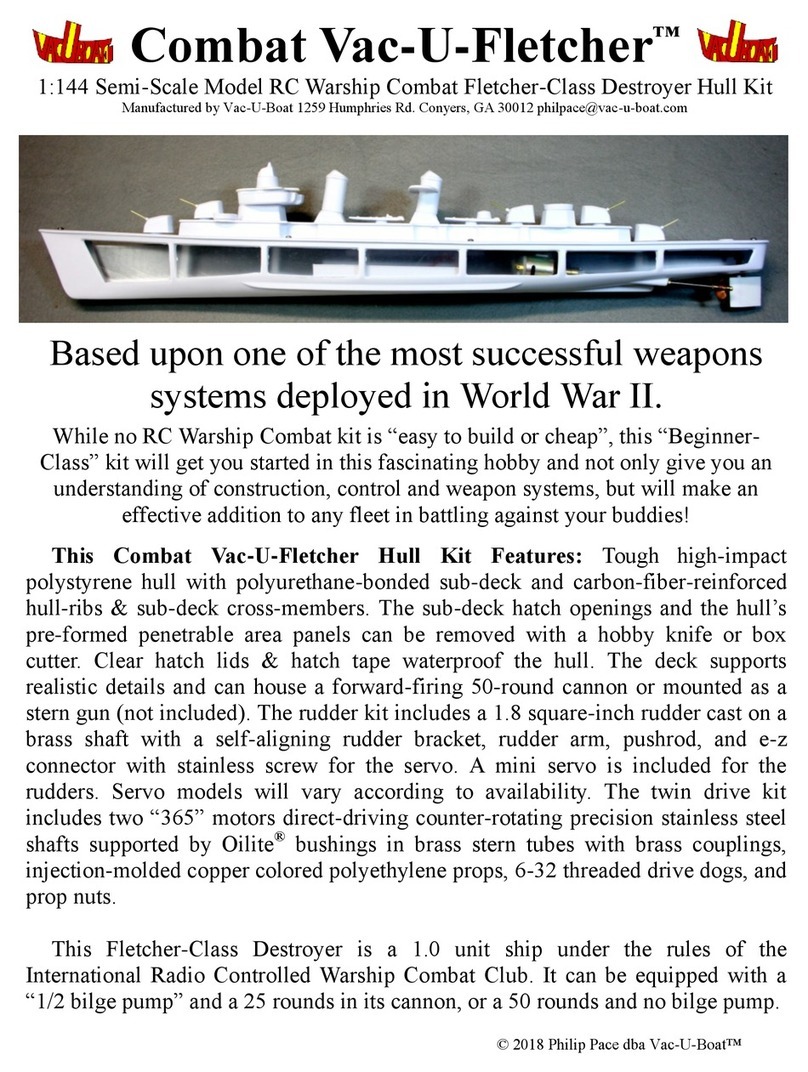
Now for the Warnings!
Read all of the instructions! Review and understand each step, and the one after, as you build
your boat. Don’t rush. Good work takes time.
This is not a toy! I know. It LOOKS like a toy, but it isn’t. Toys are generally safe for small
children. This boat is not safe for small children. Assembling it requires the use of sharp tools
that can cut skin, strong adhesives than can bond flesh and injure eyes, spray paints that can be
flammable and toxic, as well as batteries that can short causing severe burns or fires. Read all of
the instructions and warnings on all of the tools and chemicals you plan to use. Use protective
eyewear when recommended. USE SAFETY GLASSES! If you think you don’t have the
skills, or are uncomfortable with tools and chemicals, or just changed your mind, then pack
up this kit and return it immediately for a full refund including economical standard return
shipping. If you need some help, find a local boat club to join, check with the hobby shop
where you purchased your radio gear, or contact local RC sailing clubs and organizations
for assistance. Keep your work area away from children & pets. Even if you have no children,
when not working on the kit, keep all sharp objects and all chemicals locked away in a safe area.
You never know who will come to visit and how well they will supervise the young ones with
them.
This is STILL not a toy! Never run the boat if swimmers are in the water. Don’t chase wildlife.
Be careful with rechargeable batteries. They have the ability to dump large amounts of current in
a very brief period of time if shorted, causing burns or fires. Never store rechargable batteries
inside your boat, connected or not. Keep your batteries in a safe place, out of the reach of
children. You are responsible for the safe use of this product. You are responsible for choosing
wisely, those who you entrust the use of the boat and radio, even for a few minutes at a lake.
Never swim after a disabled model boat!
Read warnings on all products used in the construction of this kit. Keep your work area clean
and tidy. Whenever using hobby knives, box cutters, or razors, cut AWAY from your body. Keep
in mind where the knife will go if it breaks or suddenly cuts through the plastic. Plastic can bind
the blade of a knife and suddenly release it. If it is binding, you may be doing it wrong.
Additional force is not the answer. Angle the blade so the plastic can separate without binding.
Read the section on cutting plastic safely.
WARNING
CHOKING HAZARD - Small parts. Not for children under 3 years.
WARNING - To avoid danger of suffocation, keep plastic bags away from babies and children. Do not use in
cribs, beds, carriages or play pens.
WARNING: Brass parts in this kit contain lead, a chemical known to the State of California to cause cancer
and birth defects and other reproductive harm.
WARNING: THIS IS NOT A TOY! Once completed, this model should only to be used with the Safety
Rules and guidelines of the American Model Yachting Association.
https://theamya.org/ 2

































